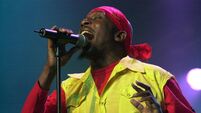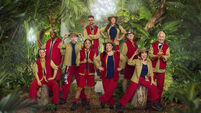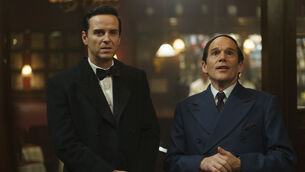Bob Dylan at Slane 1984: The music, a riot, Bono, Santana, and a future president
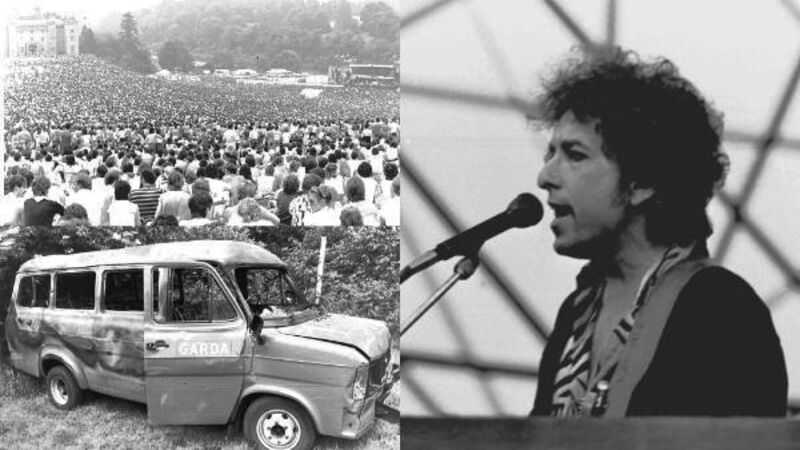
Scenes from Bob Dylan at Slane in 1984. Pictures: Eddie O'Hare, Irish Examiner
Late on the evening of July 8, 1984, Bob Dylan turned to Bono with an expectant look in his eyes. Before a crowd of 40,000, and in the shadow of Slane Castle, two of the great rock stars of their respective generations were duetting on a cover of Dylan’s 'Leopard-Skin Pill-Box Hat'.
The problem was that, while Bono was of course familiar with the song, he didn’t know all the words. So when Dylan threw the number over to him the U2 singer had to improvise and ended up riffing up a new verse on the spot.
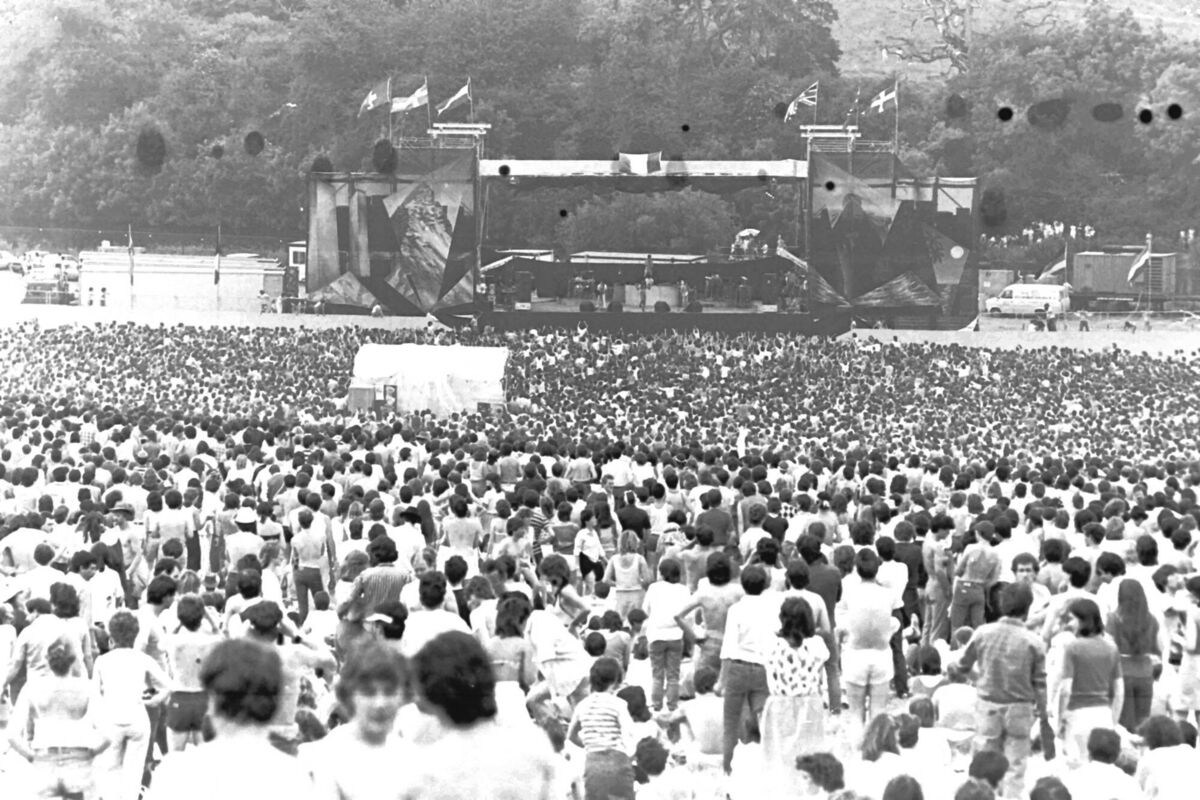
“I don’t know whether Dylan was taking the piss or what but he said, ‘I’d like to introduce you to someone that you probably know – Bone-no…’ I don’t know whether he mispronounced it deliberately or not,” remembers Joe Dermody, a Dylan fan who was just 17 when he attended Slane that year. “Bono at the time was already globally famous. They came out and sang. Bono made up his own verse."
The crowd, including Dylan fans who’d waited to see him since his last Irish show in 1966, were thrilled at this historic coming together. Many will be in Dublin on November 7 to watch Dylan, now 81, play what may well be his final Irish show, at 3Arena.
Whatever happens at the docklands venue, the concert will have to be spectacular if it is to match the sheer drama of Dylan at Slane. This had everything. Dylan wearing smudged eyeliner and a leopard print shirt, a nervous Bono rushed backstage to interview him. A crowd that included broadcaster John Kelly and poet Paul Durcan, who would be inspired to write Bob Dylan Concert at Slane, 1984 (“I saw close up the make-up on Bob Dylan face!” it begins).
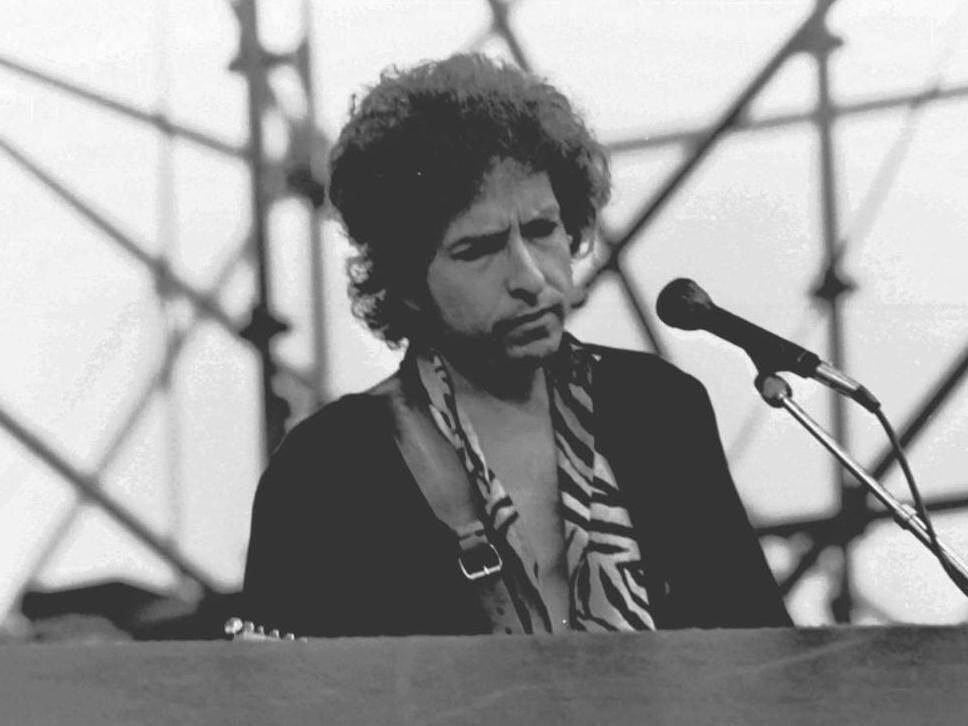
“There was a fair bit of anticipation, after all it was Bob Dylan,” recalls Tony O’Brien one of the journalists who covered the gig for the national media. “There was, perhaps, a little uncertainty about him playing a venue like Slane which was still only establishing its reputation. The Rolling Stones playing there in ’82 had certainly put Slane Castle on the map as a special venue.”
Bono may have improvised his lines for his big duet. However, he wasn’t the only one making it up as he went along when Dylan came to an obscure corner of Co Meath. In 1984, Slane was, as Tony O’Brien says, in its infancy as a musical institution. And the degree to which the event was still a work in progress was highlighted horribly the night before the gig when a riot broke out in this quiet village of 1,000.
The trouble had kicked off when the gardaí apprehended several men who had become drunk and disorderly. A mob followed and gathered around the Garda station, which is when things got out of hand.
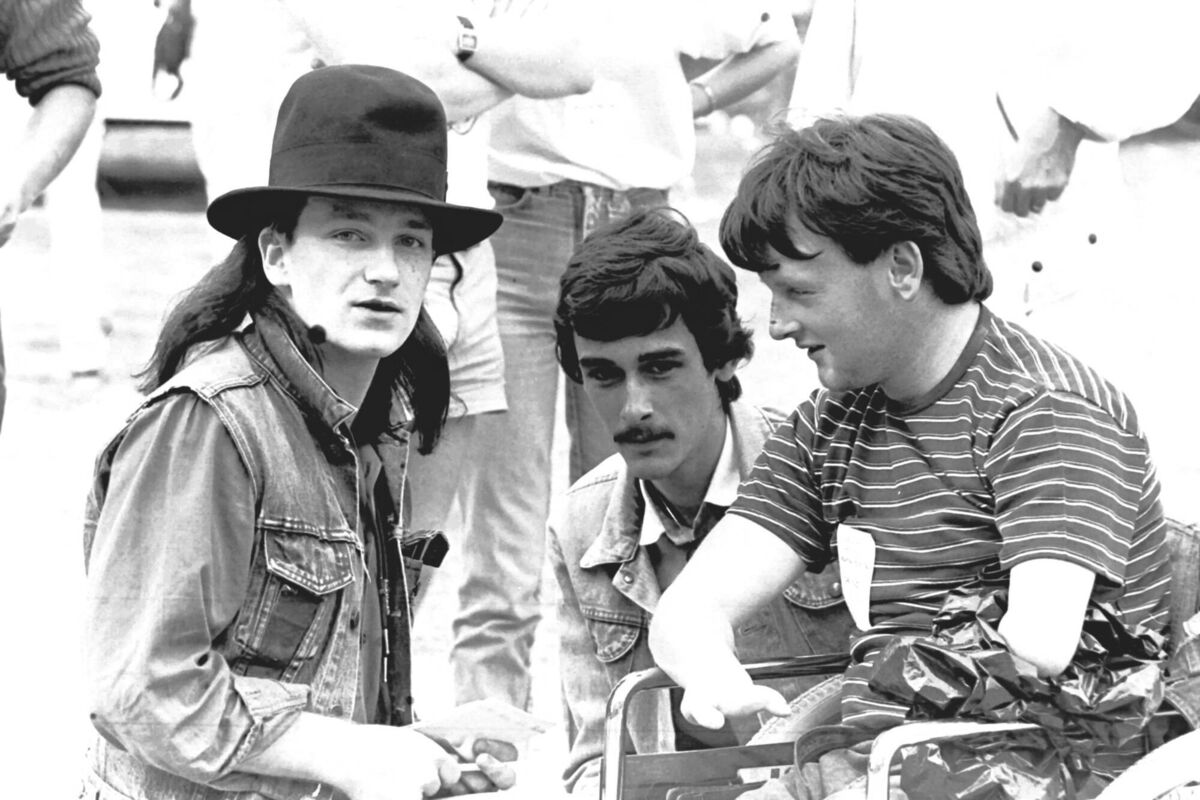
Buildings were burned, and a car was upended. One concertgoer from Belfast likened the upheavals to the riots of the Troubles. Locals were outraged. The owner of the Castle, Henry Mountcharles, expressed doubts about Slane hosting another concert. Confronted by the destruction, he said he “felt like death”.
“When we arrived in Slane early that morning, to beat the traffic, it was like a war zone,” recalls Paul Byrne, drummer with Dublin folk-rock band In Tua Nua, who opened the bill. “All of the quaint shop windows had been smashed in by a mob.”
“It was a tiny little village. The police were in riot gear. The riot was old hippies. They were stoners. It wasn’t quite a football hooligan situation. It was much more chilled,” says Joe Dermody. “They were photographs of cars on fire. I didn’t see proper violence. I was a young person – I want to go sleep. I went through the barriers. The garda had riot shields. I said, ‘look I’m obviously not charging you – I just want to go bed’. They opened the shields and let me through.”
Slane was the final date on Dylan’s European tour. The early Eighties had been a testing time for the songwriter, whose music had taken a turn for the cheesy when he became a born-again Christian in the late 1970s. The records he released around that time are regarded as disposable at best. As he entered his 40s, a former firebrand had become a bit of a damp squib.
“The whole period was one of Dylan writing fairly ordinary songs while occasionally seeming to remember how it was done,” says Tony Attwood, who runs Untold Dylan, the website that has reviewed all 627 songs Dylan is known to have written.
“Shot of Love in 1981 was seen as evidence of his decline as a songwriter, and Property of Jesus was just far too overt for anyone who is not an overt Christian.”
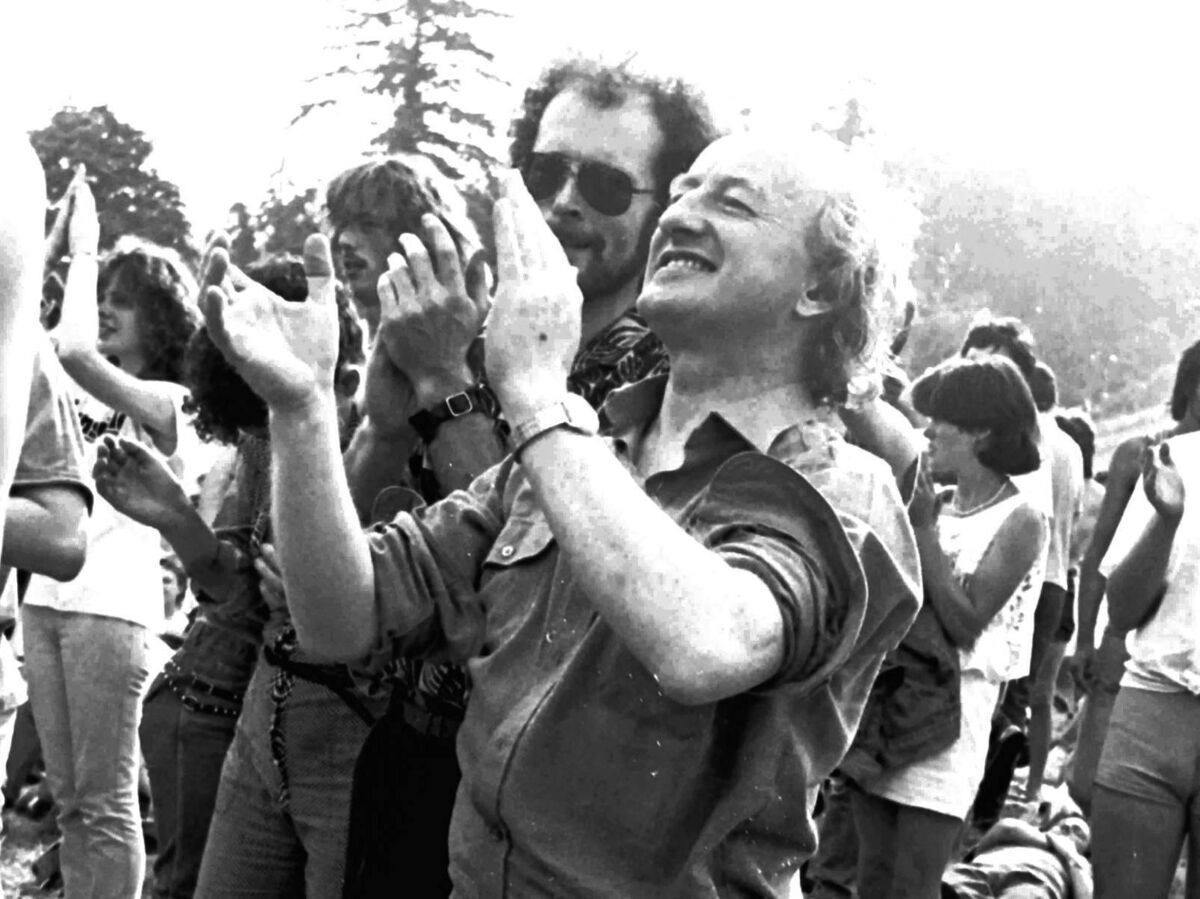
Still, there were occasional flashes of that old mercurial genius. “Some of us who notice the unusual songs and value them went overboard on Lenny Bruce, and realised the talent had not gone,” says Attwood.
Eventually, even Dylan realised he was drifting. He staged a stomping comeback in 1983 with the Infidels album - from which he played three songs at Slane. Perhaps with an eye on changing trends in rock, he’d drafted in Mark Knopfler from Dire Straits to produce the LP. Meanwhile, the live band he brought to Slane had included former Rolling Stone Mick Taylor, whose muscular playing brought a zing to classics such as High 61 Revisited and All Along The Watchtower.
But if the performance at Slane was heralded as a knock-out, around the show swirled an abundance of chaos. Slane village remained a war zone. On the morning of the concert, a 19-year-old Dubliner drowned while trying to swim the Boyne, reportedly in the hope of getting backstage to meet Dylan (it was this tragedy that prompted Durcan’s poem).
Backstage, meanwhile, a terrified Bono had been preparing to meet his idol. He’d been approached by Hot Press to interview Dylan and had agreed on the spot (U2 were in the vicinity, as they were recording The Unforgettable Fire at Slane Castle). But when he arrived, he was surprised to discover Dylan sitting with Van Morrison. Instead of grilling one icon, he would have to speak with two.
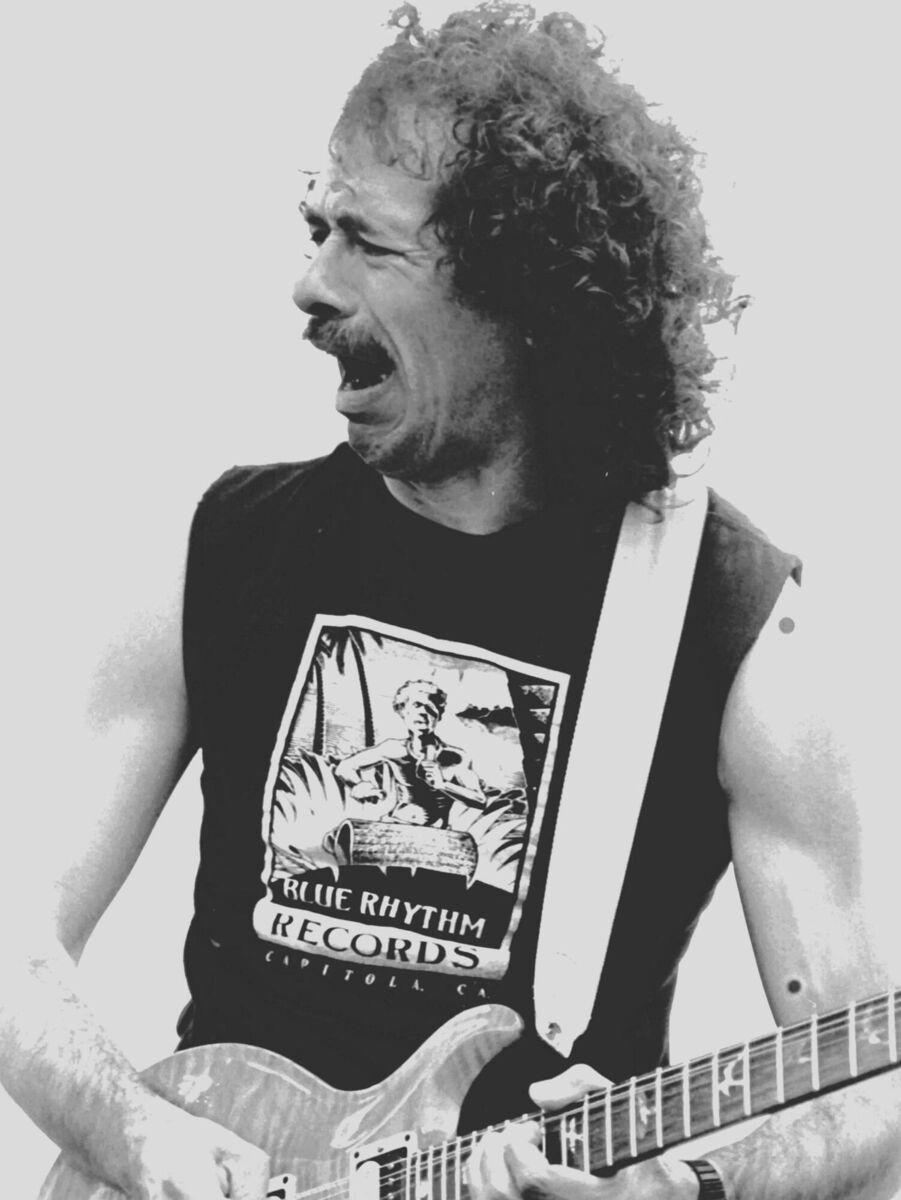
“On the day, we finally got the word sometime late in the afternoon that Bob was ready,” Hot Press editor Niall Stokes would later write in the magazine. “Bono trooped into the backstage area. The pressure was on, and there wasn’t a whole lot of time, but the summit took place. When an understandably nervous Bono stepped into the dressing room, it turned out that Bob had already been joined there by Van Morrison – which probably made our man even more nervous. And so the conversation turned into a three-way one.”
Also backstage was support band In Tua Nua, full of nerves at the prospect of sharing a bill with Dylan – and of playing to 40,000. But their evening turned into a triumph. Especially for singer Leslie Dowdall, invited back at the end to join Dylan, and fellow support artists Carlos Santana and UB40 in a big singalong of Blowin’ in the Wind.
‘Everything about the event was so exciting. Backstage the food was amazing and we kept seeing celebrities here and there,” recalls In Tua Nua’s Paul Byrne. "We were on first before UB40. When I sat down at the drum kit and saw [the crowd] I got a bit nervous, I had never played to a crowd, been on a stage or played through a PA of that size.”
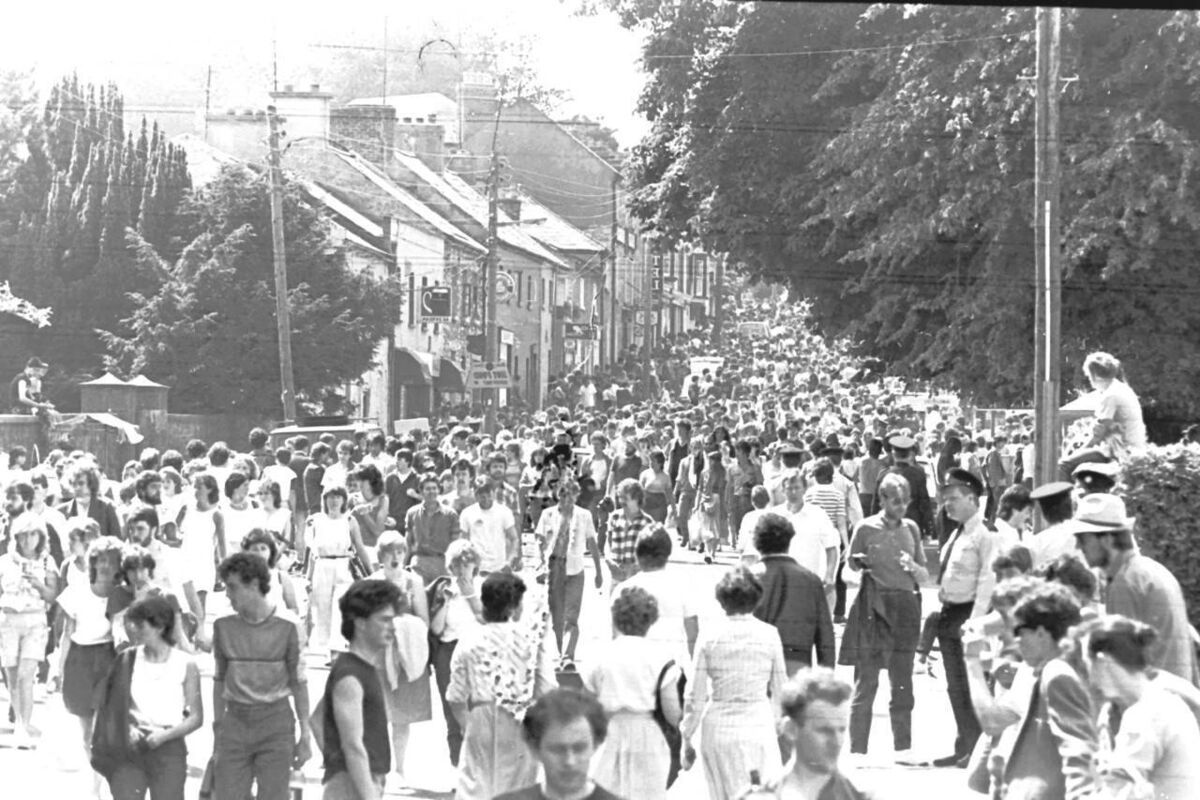
“During the gig, I could see my girlfriend at the side of the stage talking to Carlos Santana. When I asked her what Carlos had said she said 'Who?'. She had no idea. He loved the sound of the band. Later that day Leslie [Dowdall, singer] and Steve Wickham [who played with In Tua Nua and later joined the Waterboys] got to meet Dylan with Bono while the rest of us just got to see him heading to the stage, caked in wizards-eye makeup and flanked by his giant bodyguards.”
“Dylan was brilliant,” says Joe Dermody. “He still had a voice back then. He was touring a great album. He was very much on a greatest hits tour. He hadn’t become too arty of self-indulgent – choosing a setlist only to please himself, which a lot of people do over time. Most stars at some stage please themselves. He wasn’t there yet. It was a great gig.”
THE future of Slane Castle as a major rock venue is in serious doubt after the Co. Meath village was the scene of a vicious riot on Saturday night. Furious local residents swore yesterday they would not tolerate another concert" on their front door.
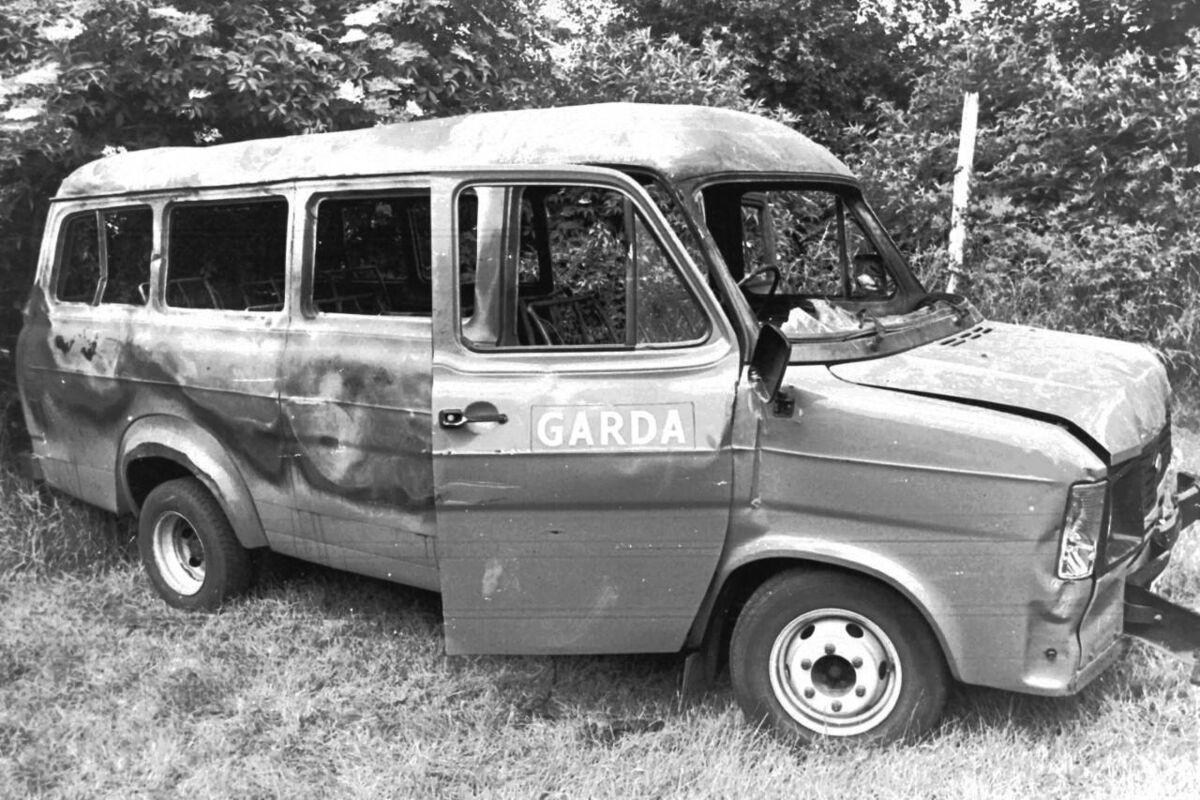
The owner of the castle, Lord Henry Mountcharles, said he would have to have a serious re-think about holding any more concerts in Slane.
Eyewitnesses say up to 600 people were involved in the running battles with gardaí. The official attendance at Bob Dylan's concert yesterday was 48,000.
It is estimated that it will cost well over £100,000 to pay for the destruction in the village.
Trouble broke out before midnight when gardaí broke up a row in a local pub. Three men, who were charged later for being drunk and disorderly, tried to resist arrest and had to be dragged to the local station. A large crowd curiously followed and Slane — normally peaceful — exploded.
There were only two dozen gardaí on duty in the village and half of them were inside the barracks. The large mob, increasing in numbers by the minute, hurled bricks, stones, bottles and cans at the gardaí who had to barricade themselves inside.
However, Chief Cupt Dick Cottrell, head of the Louth/Meath division, refused yesterday to accept that the gardaí were shortsighted in not placing more men in Slane. He said there were exactly the same number there last Saturday night as there was on the eve of the Rolling Stones concert two years ago when there was little or no trouble. "All we can do is go on experience. We thought 24 gardaí was sufficient. Twenty extra members of the force were due to arrive in the village after midnight."
At the height of the riots, the wife and family of the local sergeant, who live in an apartment above the station, were forced to take cover as all hell broke loose. The barracks were under seige for over an hour before reinforcements from Dublin, Drogheda, Dundalk, and Navan arrived.
Up to 50 people were hurt in the violent clashes that followed, including eight gardaí. The injured were later treated at Our Lady of Lourdes Hospital, Drogheda and Our Ladys Hospital, Navan. Seven were still being detained last night including one garda. They were all suffering from minor injuries.
The Army was put on standby in the village but were not called upon to act as gardaí finally brought the rioting under control.
Yesterday morning Slane residents were trying to forget their night of terror. The village was a sea of broken glass and empty beer cans.
Many people said that the violence was despicable and tatally unprecedented. One woman desribed the rioters as "savages". She said she thought she was living in West Belfast.
Chief Supt. Cottrell said that "cider and drugs" were largely to blame. Bar extensions didn't help either. "We opposed some of the applications in the court," he said.
Last night, as the weary Dylan fans made their way home, there was a heavy garda presence in East Meath. All of the pubs in Slane closed at teatime at the request of the gardaí. A major clean-up will begin in the village later this morning.
Dylan’s first Irish concert was at the same Abbey Street cinema that had previously hosted The Beatles and The Rolling Stones. Tickets were still available for the show in the days before, advertised at 25 shillings each.
The show began with Dylan playing acoustically. After an intermission, he was joined by a band for a plugged-in performance.. Reportedly the audience booed the electric set – which was widely regarded as a betrayal of Dylan’s folk roots. “Mr Dylan is a poet,” went a review in the Irish Times. “And though he might be but a minor one were he to publish in slim volumes without the assistance of guitar, harmonica and publicity machine, it is something to sell poetry to a mass-audience at all.”
The intimate Liberties venue saw Dylan play to his smallest Irish audience since the Adelphi and there were parallels with the set split into an acoustic and electric segment.
Dylan’s Cork debut saw him playing favourites such as Maggie’s Farm, Just Like A Woman and Like A Rolling Stone. He must have enjoyed himself because he returned to the venue in 2011 and 2014. “Last night was the best I’ve seen or heard him; arguably one of the best nights in the tent,” raved Joe Dermody in the Irish Examiner of the 2006 gig. A famous Bob Dylan fan spotted in the Marquee that night was Roy Keane.
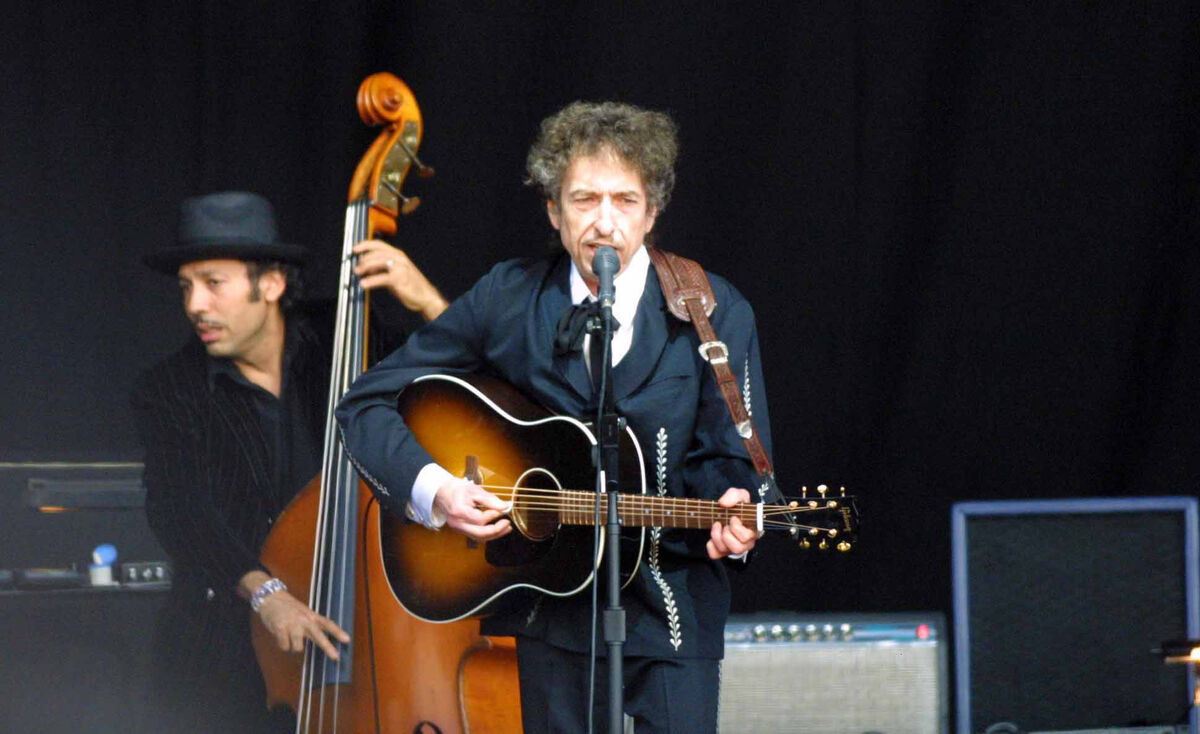
Dylan was sharing the bill with Neil Young – and fans were in for a treat when the two hold warhorses came out on stage together for a rendition of Johnny Cash’s Will the Circle Be Unbroken. Dylan’s own set saw him continue with his decades-long project to reinvent his songbook, as demonstrated by a take on Blowin’ In The Wind that changed everything about the track except its lyrics.
More than 5,000 people had purchased tickets for Dylan’s appearance at the Greenglens Arena in Millstreet, Co Cork, in November 2003. The singer had played at Dublin's Point Theatre just two nights previously, but by the time he reached Killarney where he was staying, he was already feeling a strain on his voice. Due to take to the stage after 8pm, the concert was cancelled at 4pm, with many fans already in the town. Promoters said Dylan had been given medical advice that he was suffering with severe viral laryngitis, and continuing with the gig could have damaged his voice.

